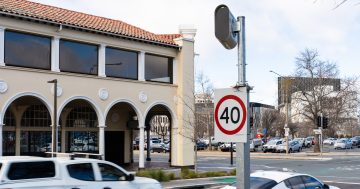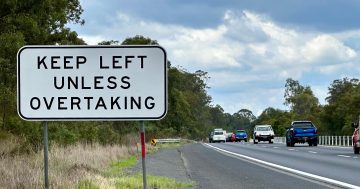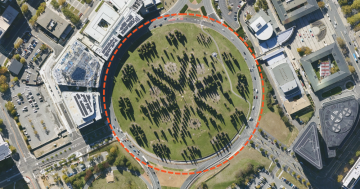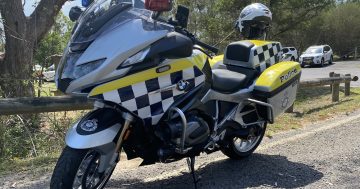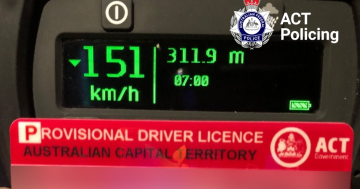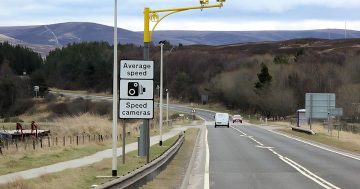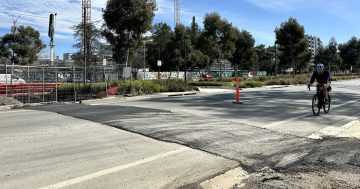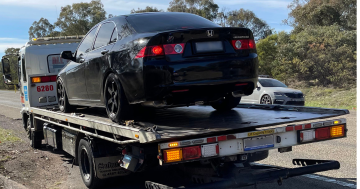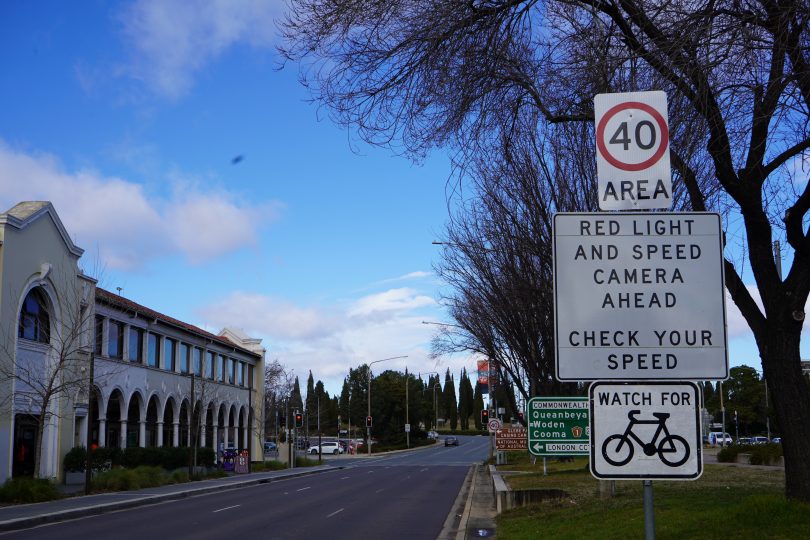
No excuses. The signposted camera pole on Northbourne Avenue before London Circuit. Photo: Dominic Giannini.
No one likes getting a speeding ticket. It’s a lapse that can happen anytime, anywhere, so I get why people caught in the new city speed trap are sounding off.
I feel their pain, but they can’t say they weren’t warned.
The new 40 km/h zone on Northbourne Avenue and Barry Drive – to make it safer for vulnerable road users such as cyclists, pedestrians and now scooter riders – were announced way back in March, and while the adjusted speed cameras were switched on on 21 June, fines were only issued from 5 July.
During the first 48 hours of operation during the grace period, the government reported that 5,000 drivers had flouted the speed limit and warned Canberrans to slow down going through the city.
This was despite the speed being clearly signposted before the cameras at the intersections of Northbourne Avenue with Barry Drive and London Circuit, and Barry Drive and Marcus Clarke Street.
By the time the grace period came to an end, about 20,000 had sped through, although they had not been sent a warning notice, something the NRMA criticised.
When the cameras went ‘live’, many drivers were still sailing through the intersections, seemingly unaware that the world had changed.
Almost 1,260 drivers were caught on the first day, and the three Civic cameras have been raking in $1.6 million a week in fines.
About 6,100 fines, which start at $260 and range up to $1830, are being issued by the cameras weekly, and those caught speeding by between 15 and 30 km/h face a $438 fine and incur three demerit points.
Proof, according to Canberra Liberals transport spokesperson Mark Parton, that the government’s failure to communicate had created a perverse outcome.
But how many announcements and media stories does it take?
Canberra drivers need to take responsibility. Lower speed limits in Canberra have been around since 2013. They have been gradually expanded to busy built-up areas that also have a lot of pedestrians.
Northbourne Avenue may be Canberra’s central boulevarde, but that doesn’t mean it should be excluded from the calmer traffic conditions, especially with light rail heading into City West where inevitably there will be more development and increased pedestrian, cycling and scooter traffic.
The evidence that lower speed limits reduce the impacts and deaths from collisions is irrefutable, and something magistrates have been telling speeding drivers since cars have been on the roads.
The government says research shows a 10 km/h decrease in speed can reduce the risk of death from approximately 80 per cent (50 km/h) to 30 per cent (40 km/h).
The point-to-point cameras on Hindmarsh Drive over Mt Mugga Mugga from Garran to Red Hill have successfully pacified a notorious and, at some times deadly raceway to the safe but perfectly reasonable 80 km/h speed limit.
Speed limits change across Canberra, and drivers are expected to follow the signposted advice. Saying I didn’t see it or I forgot, does not wash.
The apparent mass ignorance in the city may reflect an increasingly distracted or disengaged populace, or in a city where the car is king, an expectation that you should be able to drive down a main road at a minimum of at least 60 km/h.
Cultural entitlement can be hard to shift, but the hip-pocket nerve is a good place to start.
Canberra, as it grows and becomes denser, needs to be people-friendly. A calmer traffic scene in the city will not only be safer but more appealing to the increasing number of people who will live there, and those working and recreating there.
A slightly slower run through the city will not add that much to a journey time, but it could mean the difference between life and death.












